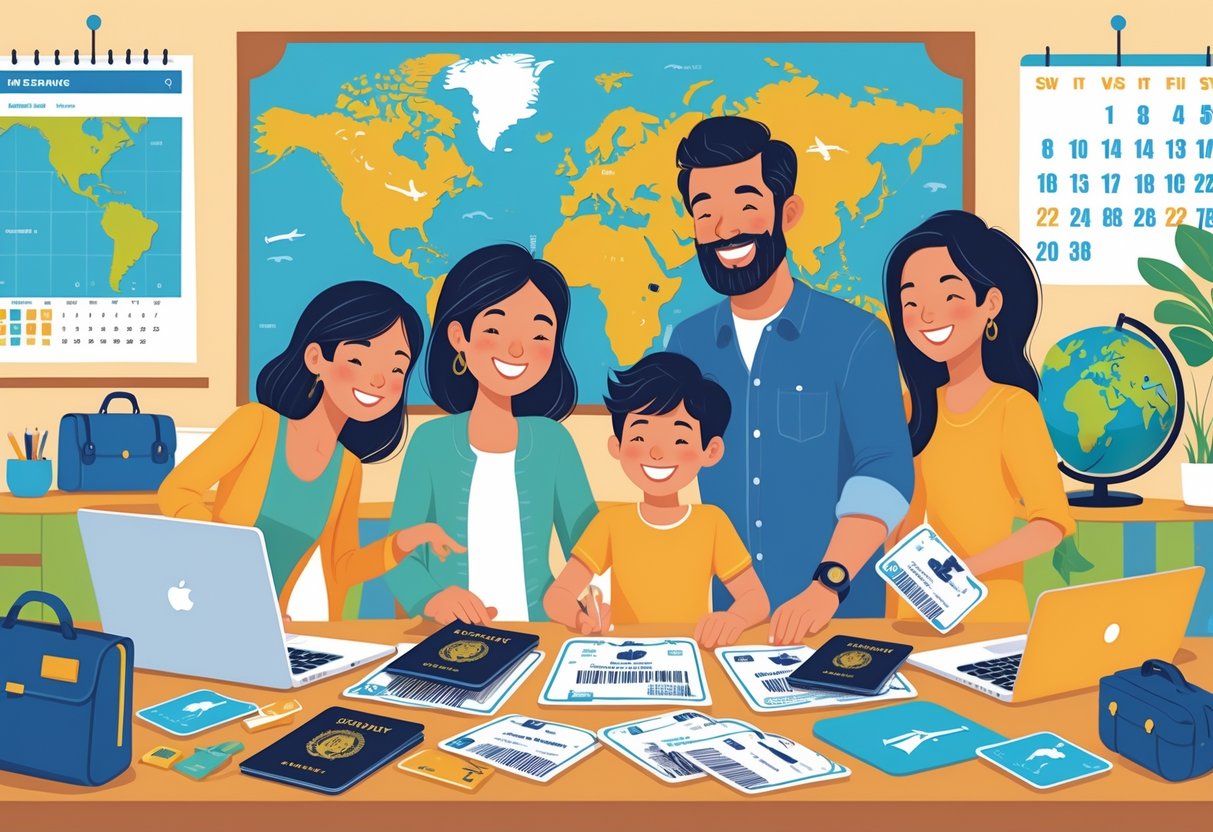
Booking Accommodations and Transportation

Selecting the right accommodations and arranging transportation are crucial steps to a successful family vacation. These decisions help determine comfort, convenience, and how smoothly the family trip unfolds from start to finish.
Choosing Family-Friendly Accommodations
When booking a place to stay, families should prioritize venues that offer space, amenities, and safety. Many look for hotels, resorts, or vacation rentals with features designed for children, such as pools, play areas, or suites with multiple bedrooms.
These options make it easier to keep everyone comfortable and engaged. It’s also important to check policies on extra beds or cribs, and whether the site is located near attractions or essentials like grocery stores.
Some families choose vacation rentals for amenities like full kitchens and laundry, which are especially helpful on longer stays. Before making a reservation, reading recent reviews and verifying cancellation policies can prevent surprises.
Consider using family travel checklists, such as those found on Travel Byrds, to compare options and ensure all must-have features are covered.
Navigating Travel Options
Securing transportation early often results in better prices and more choices. For air travel, comparing airlines for family perks—like free checked bags or priority boarding—can reduce stress.
Direct flights are especially popular for family getaways, as they cut down on travel time and minimize the risk of missed connections. If driving, plan the route with stops for food, restrooms, and stretching.
Car rentals with child seats or larger vehicles for extra luggage can make road trips much smoother. For those using trains or buses, look up schedules and seat reservation options for added convenience and flexibility.
Booking both accommodations and transportation as far in advance as possible, as recommended in guides like this ultimate family vacation checklist, helps avoid last-minute hassles.
Travel Documents and Identification

Traveling with family means preparing essential travel documents ahead of time. Having a clear plan for keeping everything safe is important.
Attention to detail with documentation can prevent issues and delays on your trip.
Organizing Passports and Visas
Every traveler—including infants and children—needs a valid passport when traveling internationally. It’s important to check the expiration dates for all family members’ passports well in advance, as many destinations require passports to be valid for at least six months beyond your travel dates.
Applying for new passports or renewals can take several weeks, so early planning is key. Research the visa requirements for your destination, as some countries require travelers to secure entry visas before arriving.
Required documents and application timelines can vary, so visit official government websites for the most up-to-date information. Print and store extra copies of each family member’s passport and visas in a separate envelope or folder in case originals are lost.
Create a simple checklist of travel documents for each person in your group:
| Traveler | Passport | Visa Needed | Copies Packed |
|---|---|---|---|
| Adult 1 | ✔ | ✔/✖ | ✔ |
| Adult 2 | ✔ | ✔/✖ | ✔ |
| Child 1 | ✔ | ✔/✖ | ✔ |
| Child 2 | ✔ | ✔/✖ | ✔ |
Using a checklist ensures nothing gets overlooked.
Keeping Documents Secure
Keeping travel documents safe is crucial during family vacations. Use a dedicated travel wallet or a zippered pouch for passports, visas, and boarding passes.
Some travelers prefer wearing a neck pouch or money belt for extra security, especially in busy transport hubs and crowded attractions. Consider storing digital copies of important documents in a secure cloud storage app or emailing them to yourself.
This provides quick access if the originals are lost or stolen. When staying at hotels, use the room safe to store passports and other sensitive documents you don’t need for daily activities.
Never leave belongings unattended. If you are traveling with children, teach them to alert an adult if they notice a missing document or item.
For more travel planning tips, read this ultimate family vacation checklist.
Protecting Your Trip with Travel Insurance
Family travel insurance provides peace of mind for any family trip by covering unexpected disruptions, emergencies, and losses. Choosing the right policy and understanding its terms can save stress and money if something unplanned occurs.
Selecting Family Travel Insurance
When selecting a travel insurance policy for a family vacation, it is essential to consider coverage limits, family size, and destination requirements. Families should look for plans that offer strong protection for medical emergencies, trip cancellations, and lost luggage across all covered family members.
Some policies have a single premium for all travelers, making it easier and sometimes more affordable. Comparing policies from different providers helps identify gaps, exclusions, or additional benefits such as coverage for pre-existing conditions or adventure sports.
Reading reviews and checking for 24/7 customer assistance are also important steps. A detailed checklist for picking the right plan can be reviewed at Travel Byrds’ family vacation checklist.
Understanding What’s Covered
Travel insurance policies vary, but comprehensive family travel insurance typically includes protection for trip cancellations, medical emergencies, trip delays, and lost or delayed luggage. Parents should verify that the policy covers both adults and children for each category of risk.
Some plans may also cover unforeseen events like natural disasters or airline strikes. Coverage details are listed in the policy’s certificate.
Travelers need to pay close attention to claim limits, required documentation, and exclusions such as pre-existing conditions or high-risk activities. For further tips on what’s included, refer to 11 tips for protecting your trip with a travel insurance policy.



